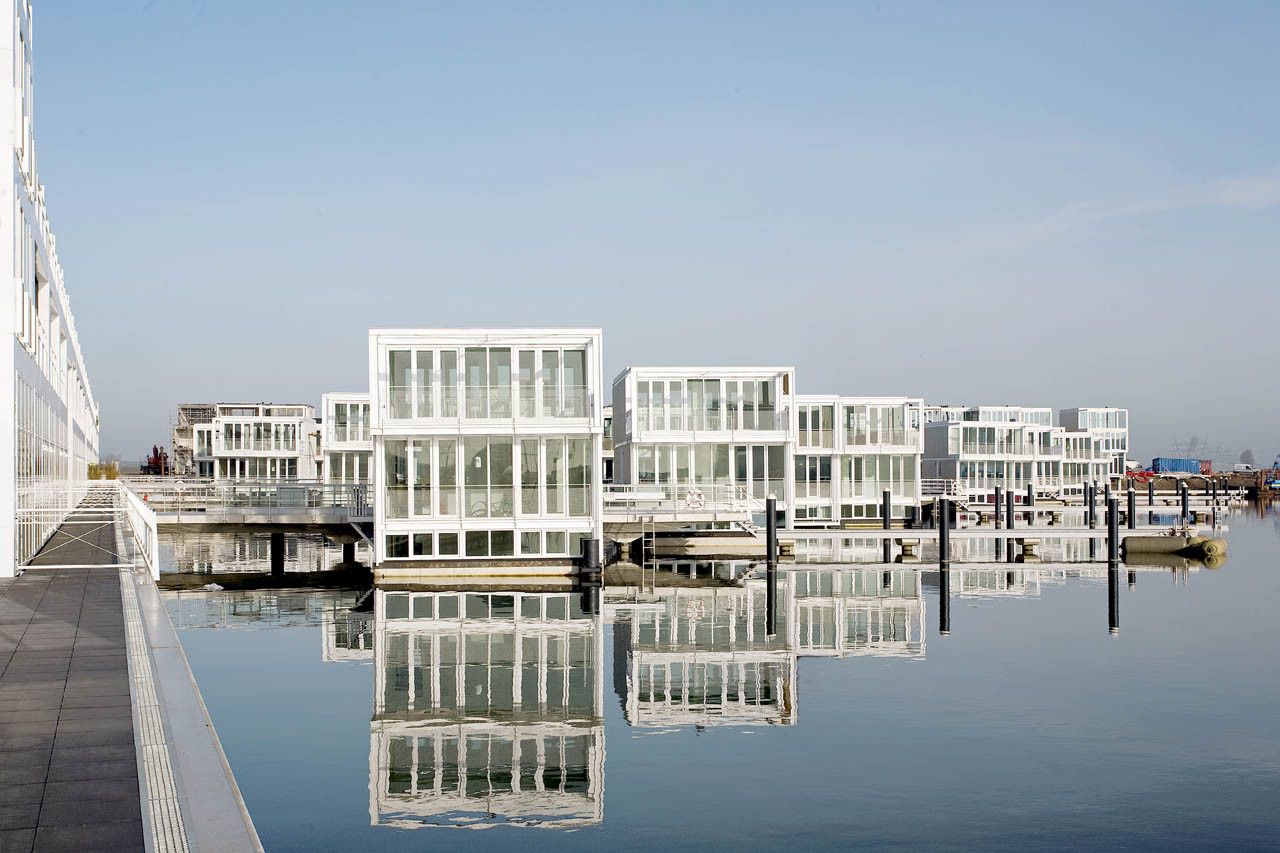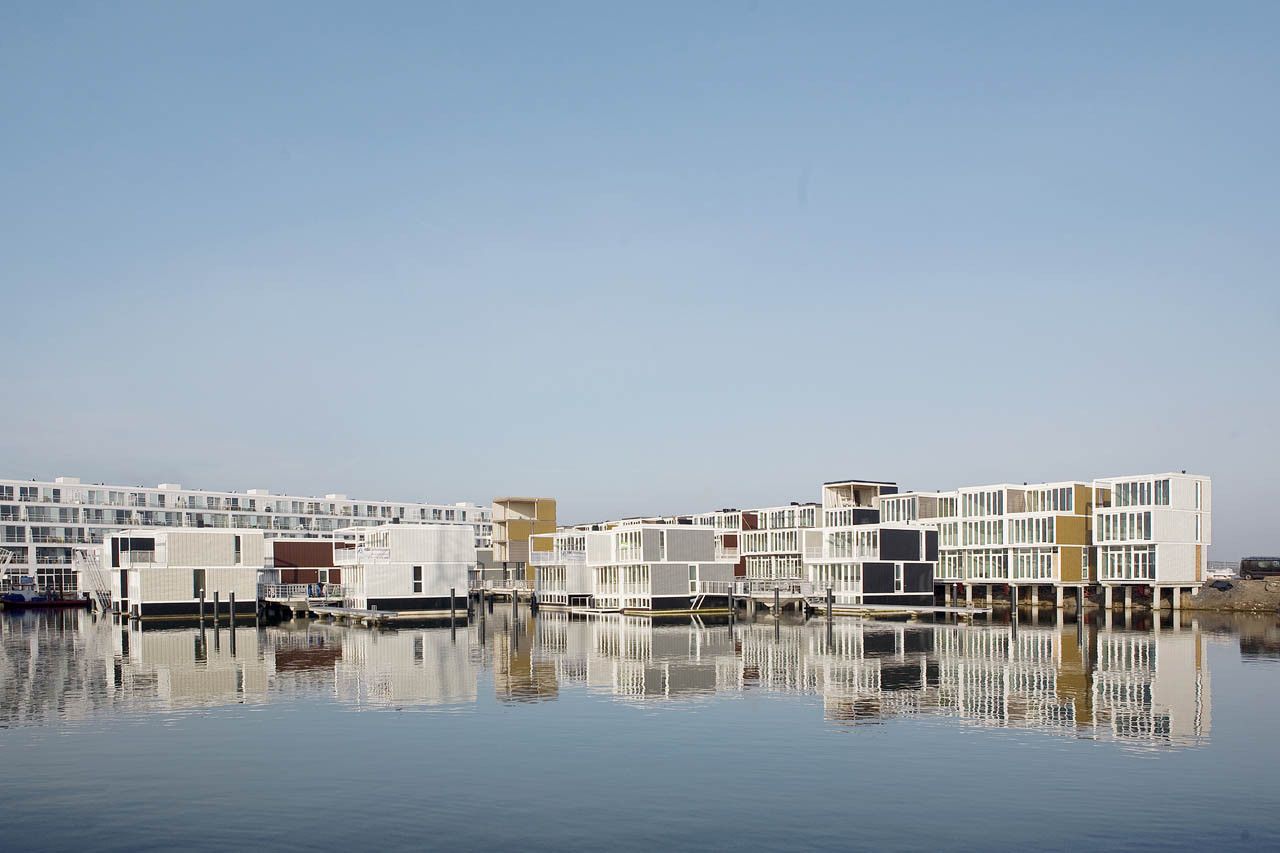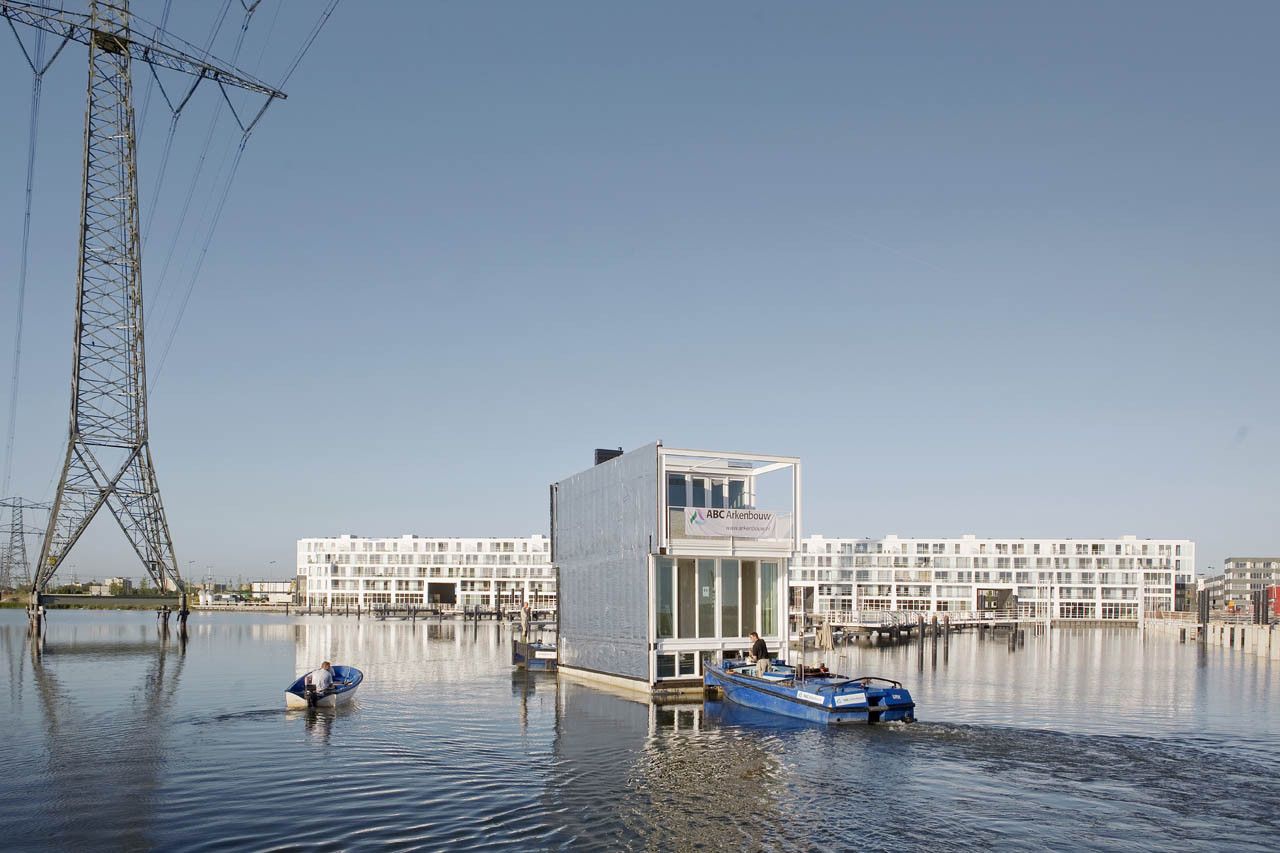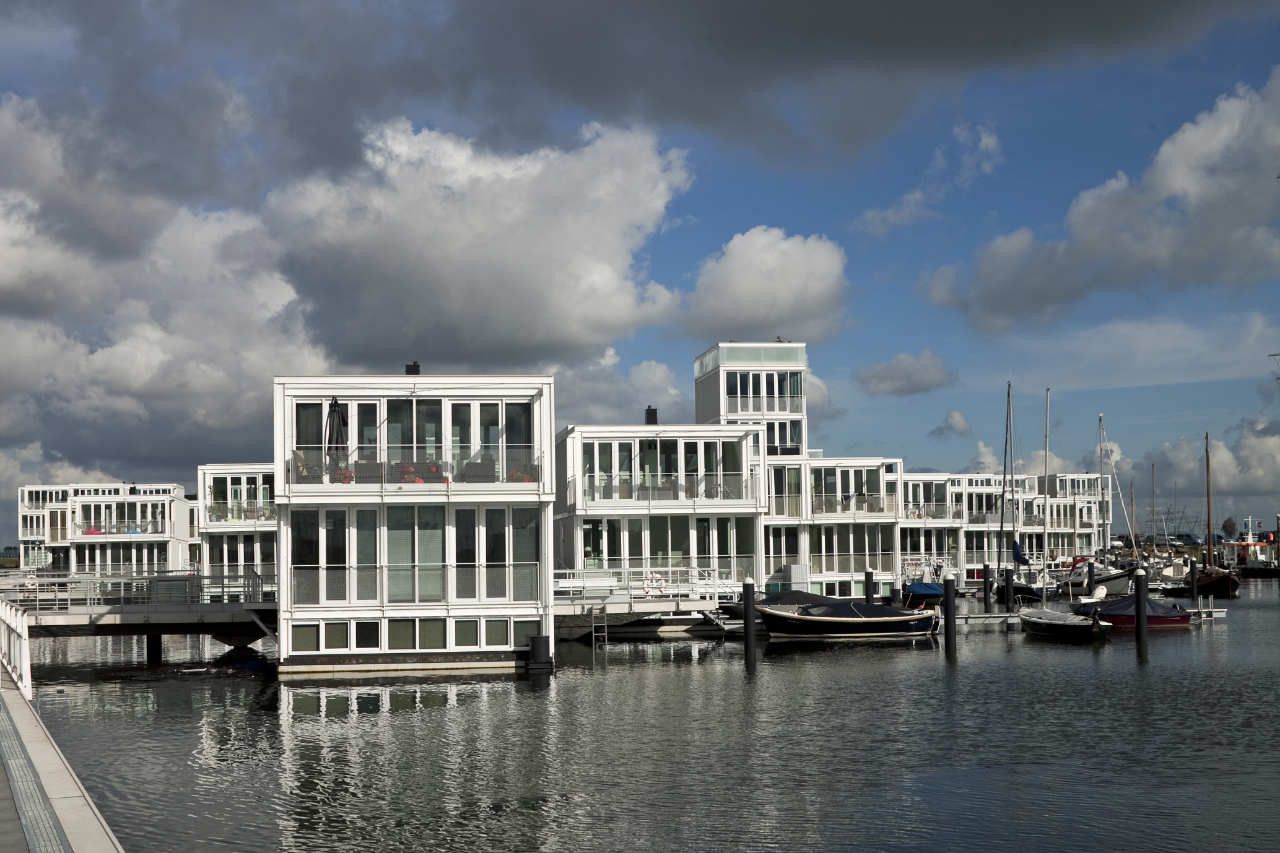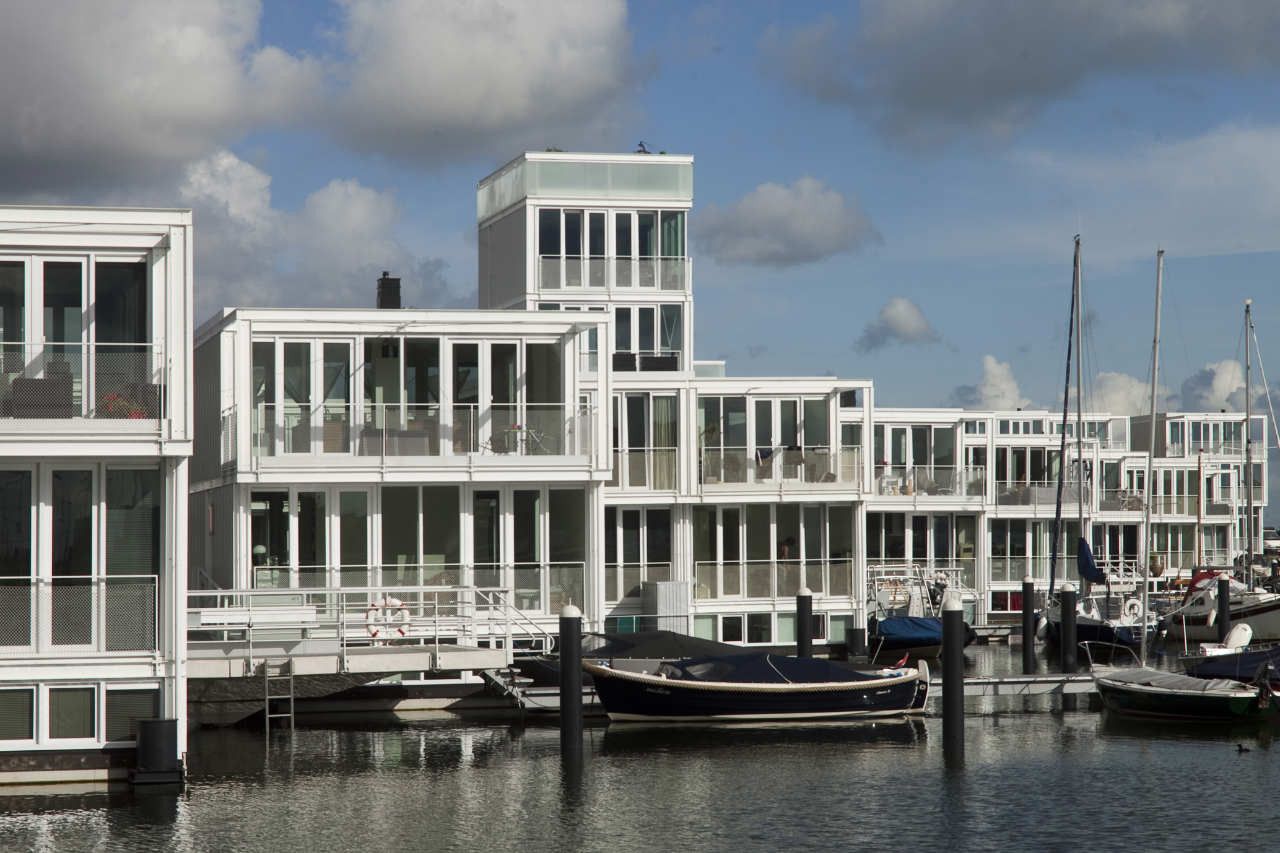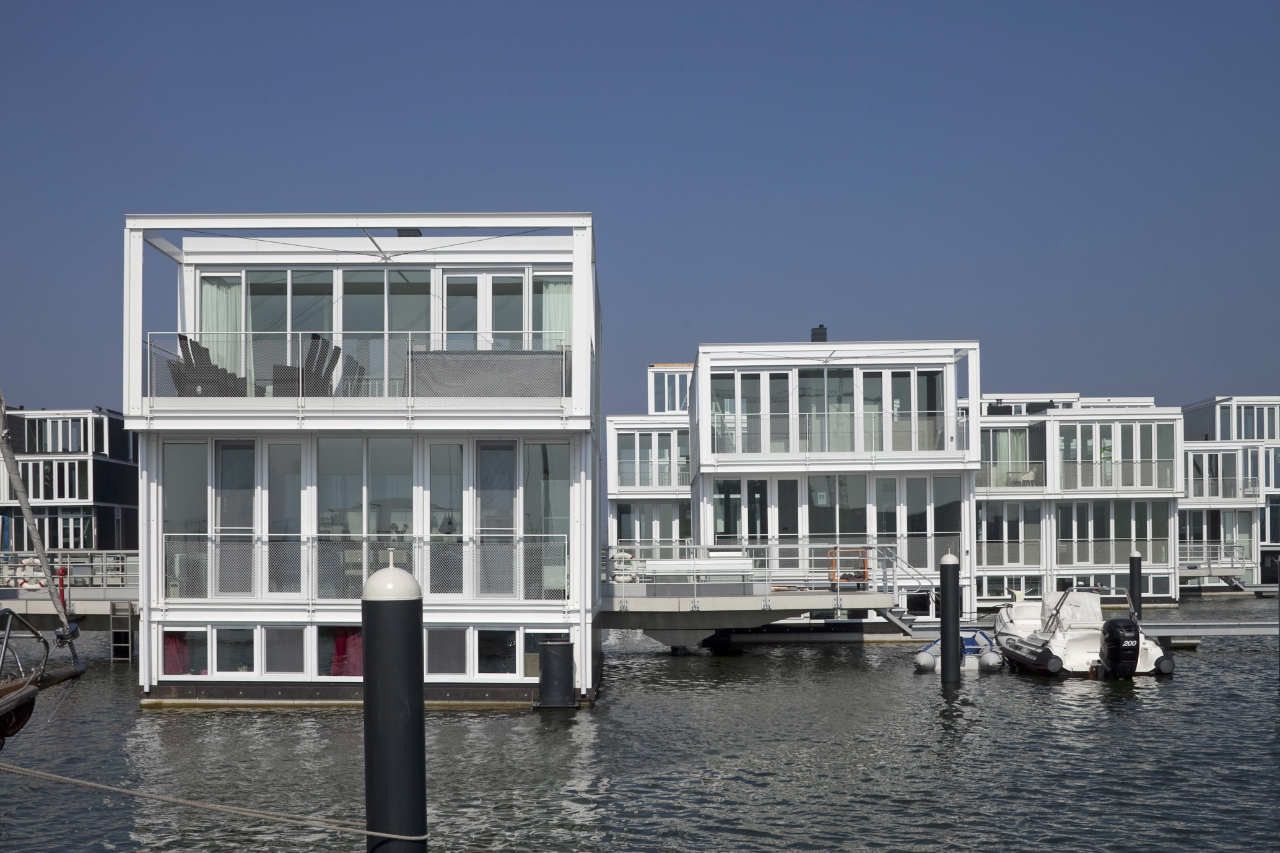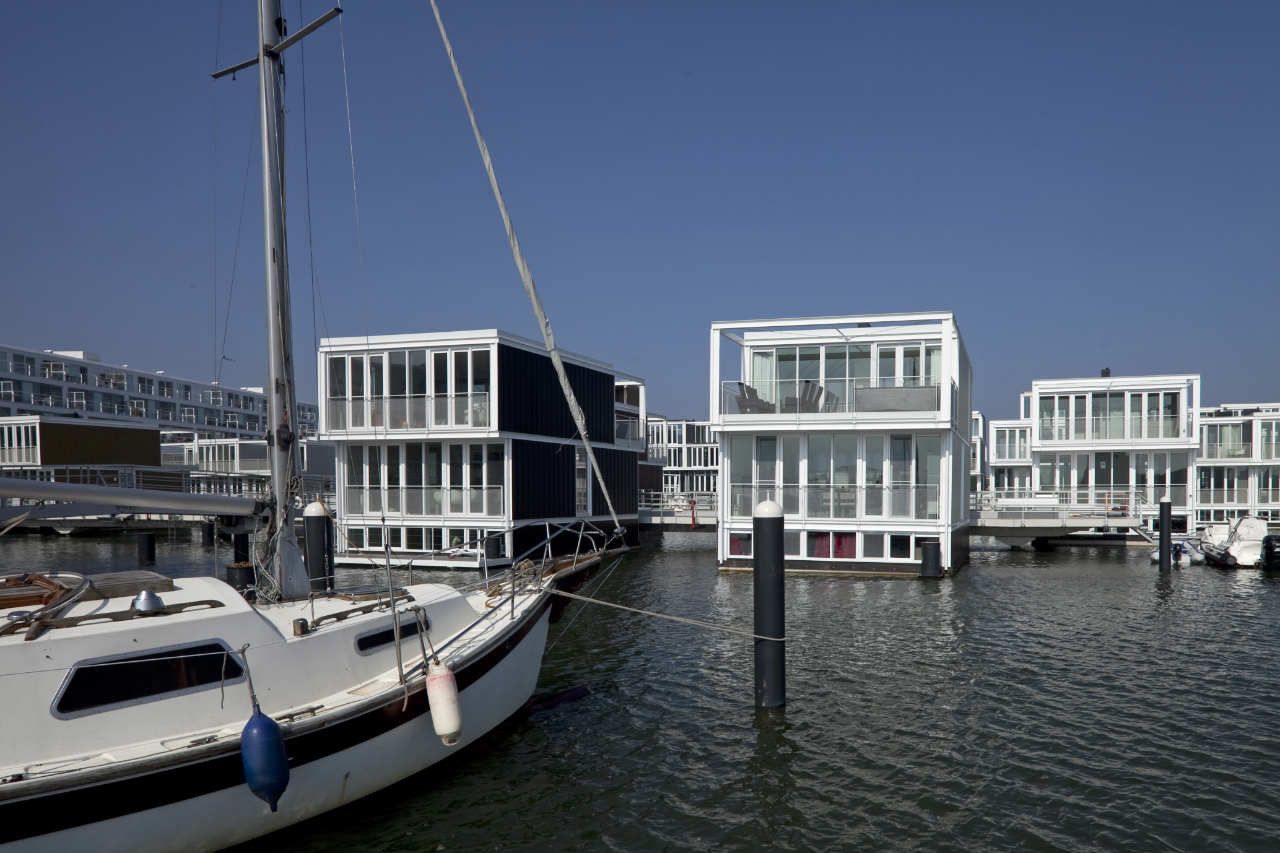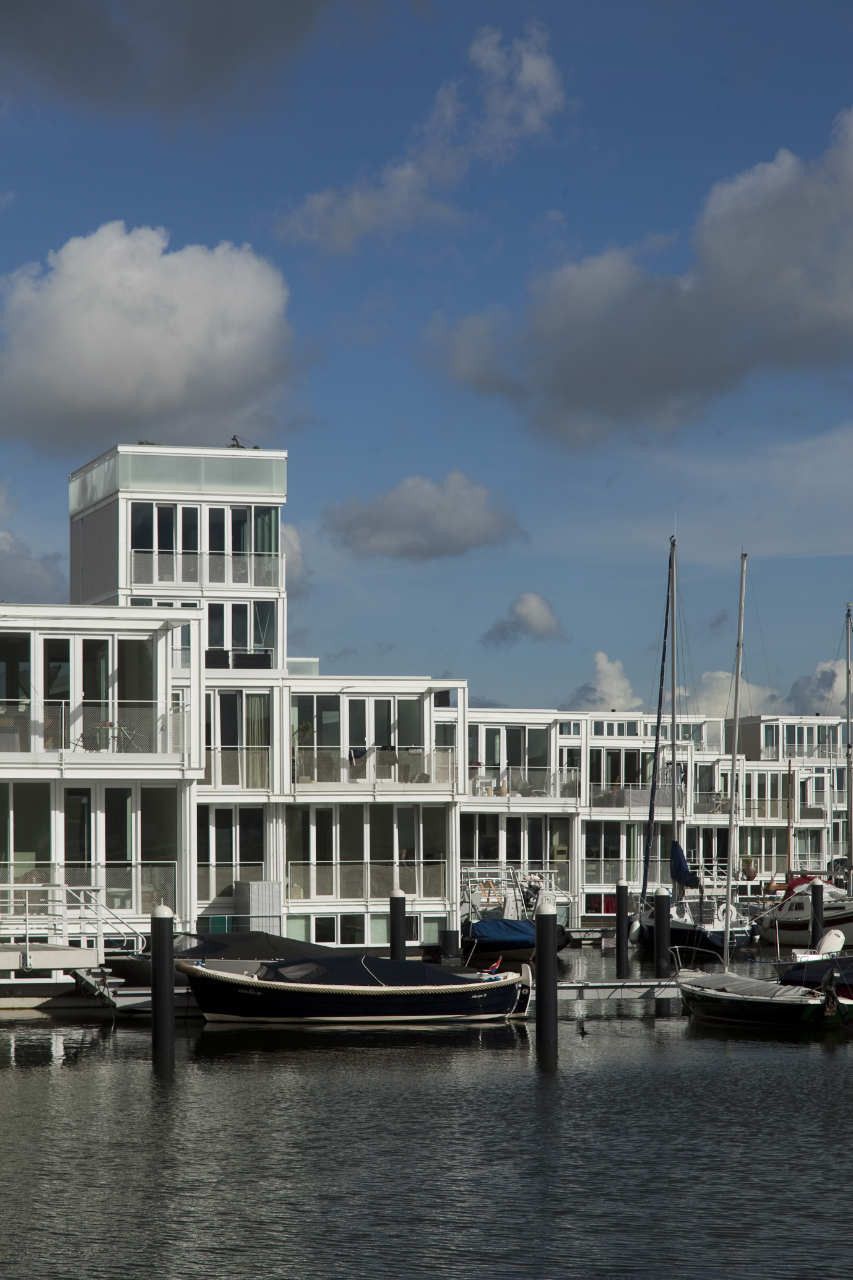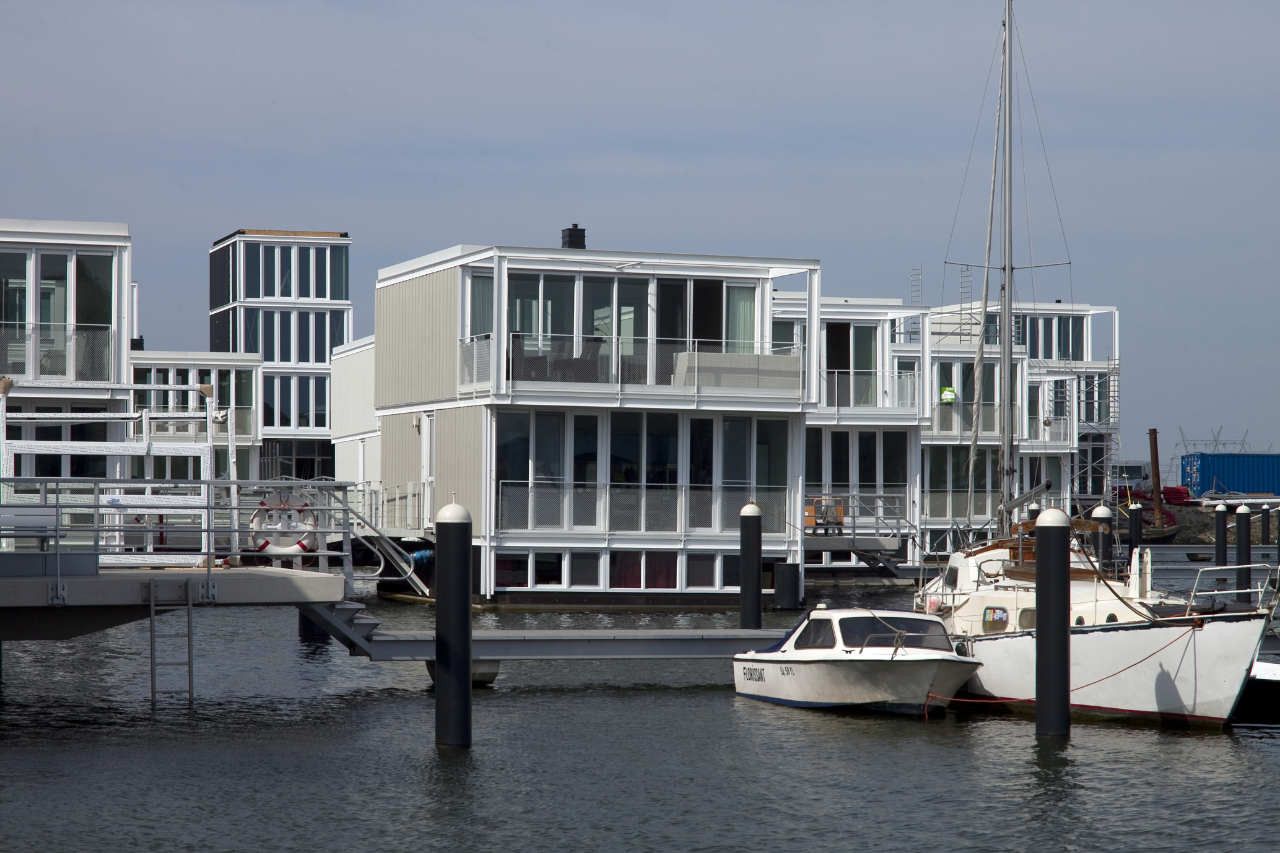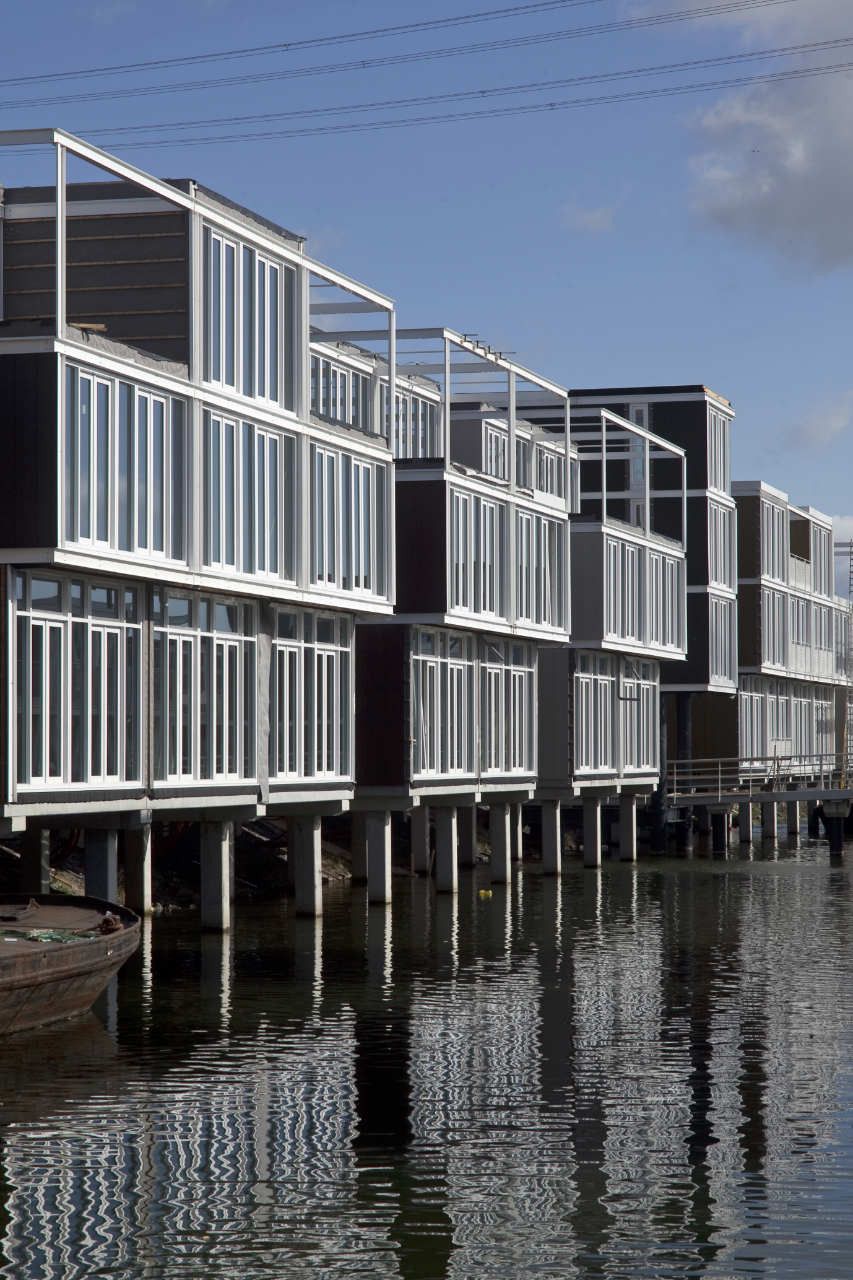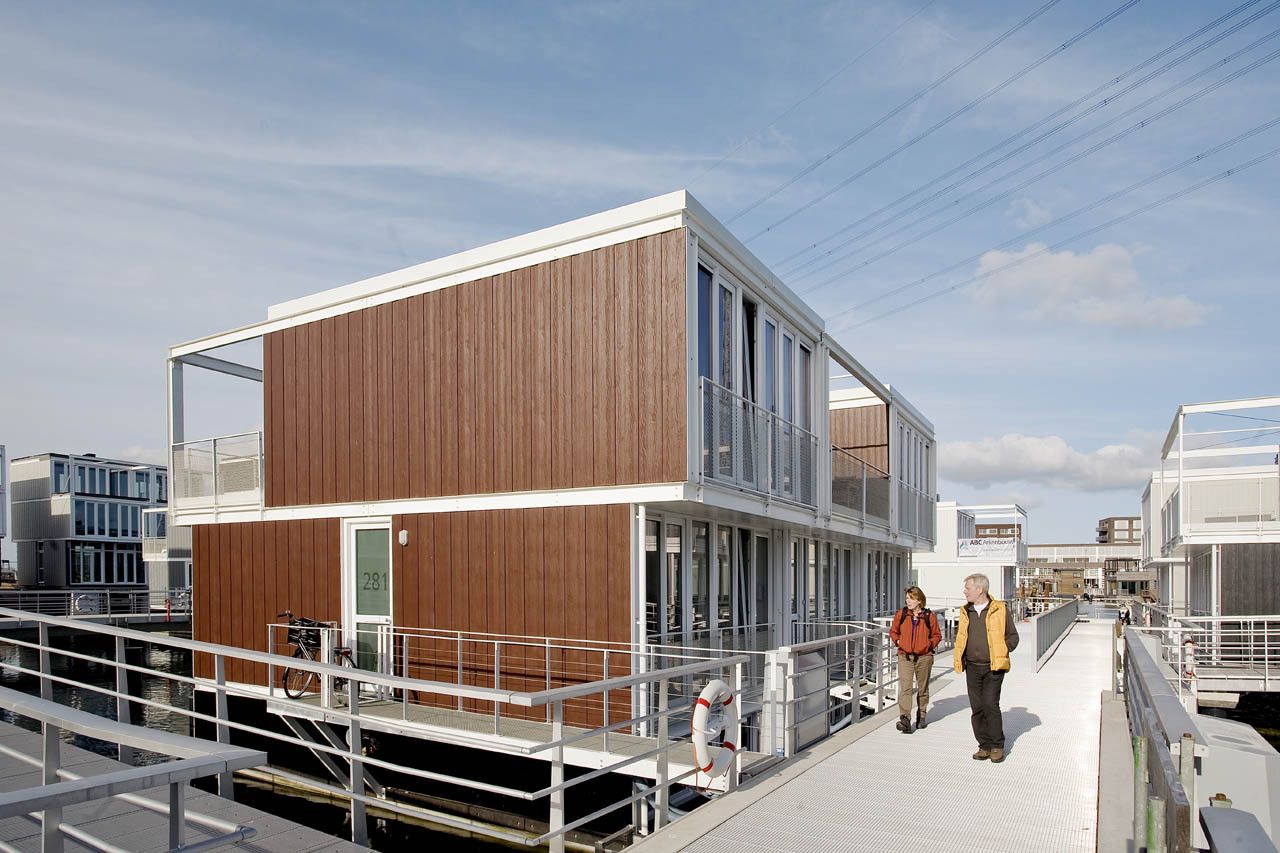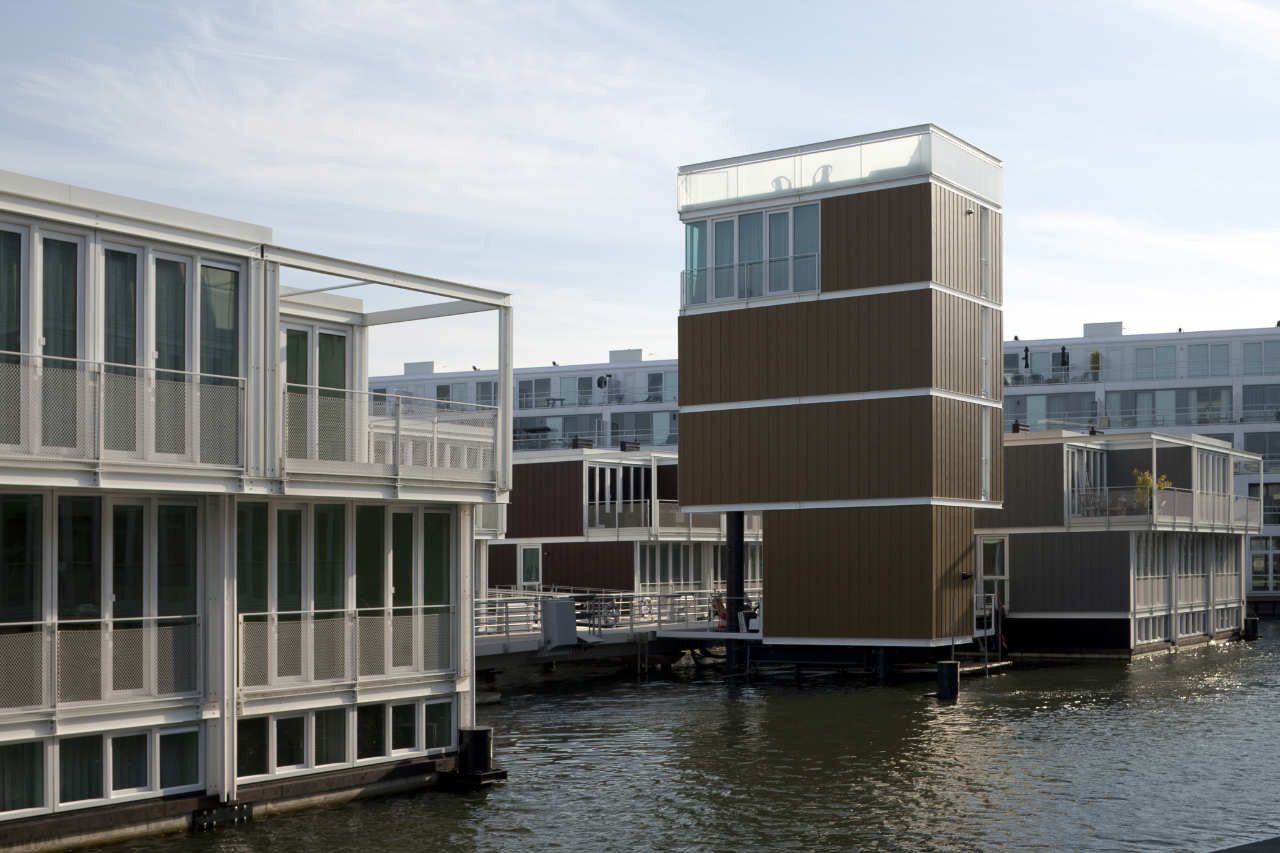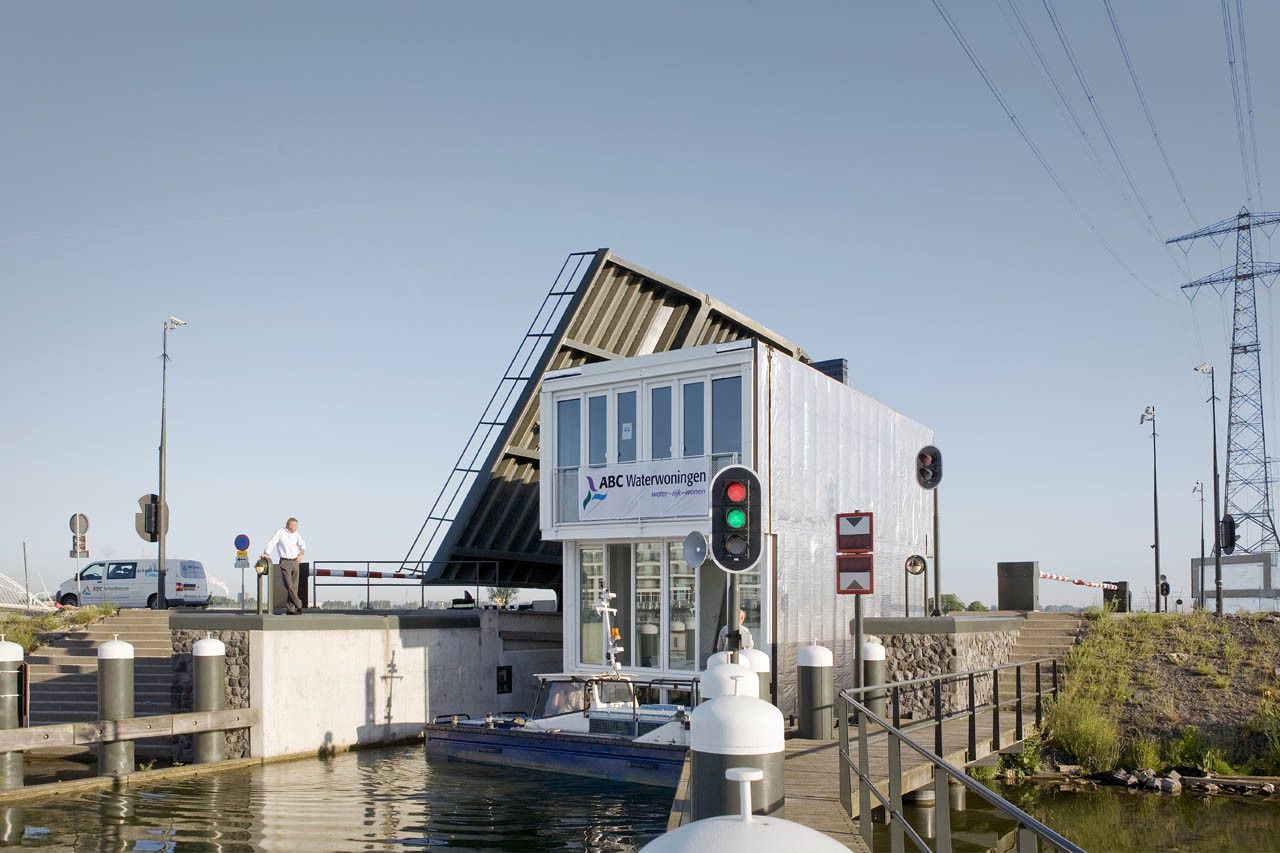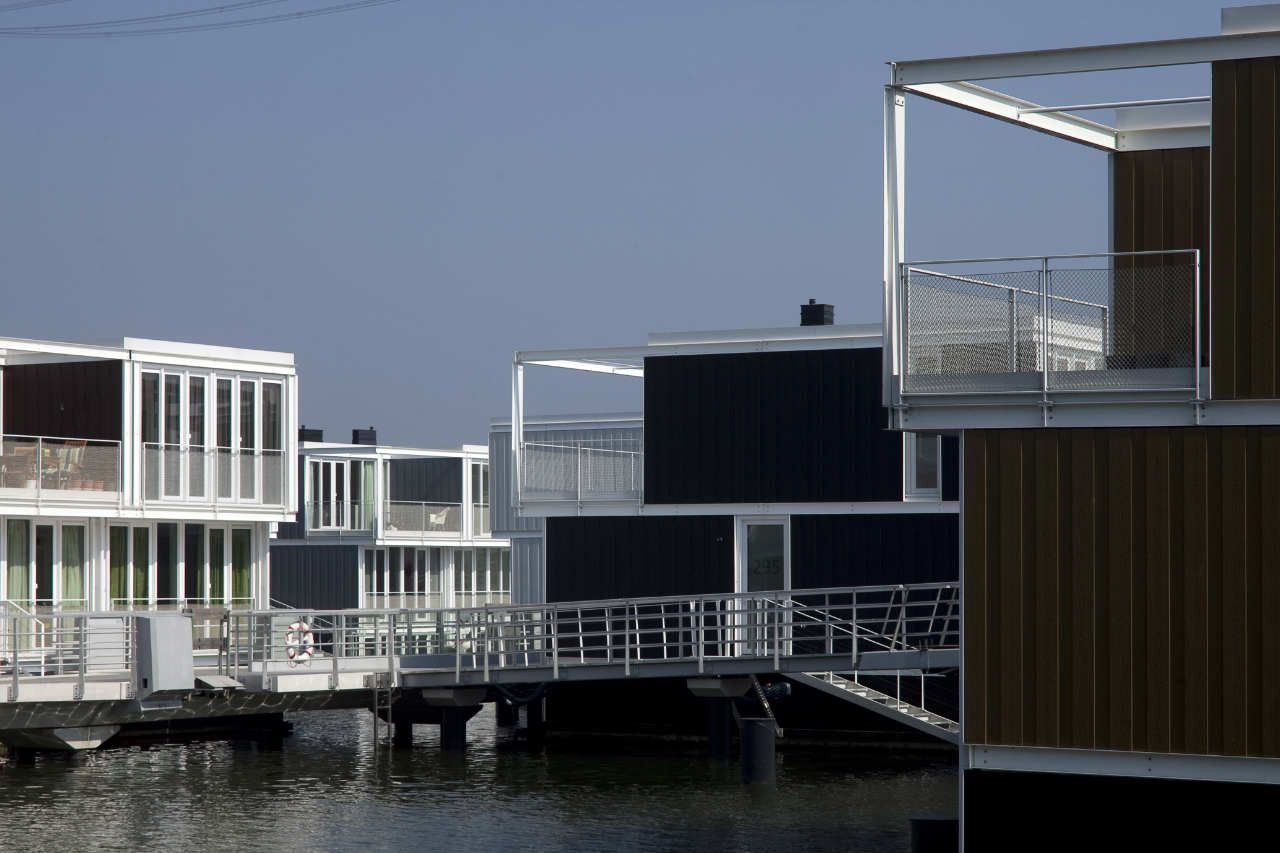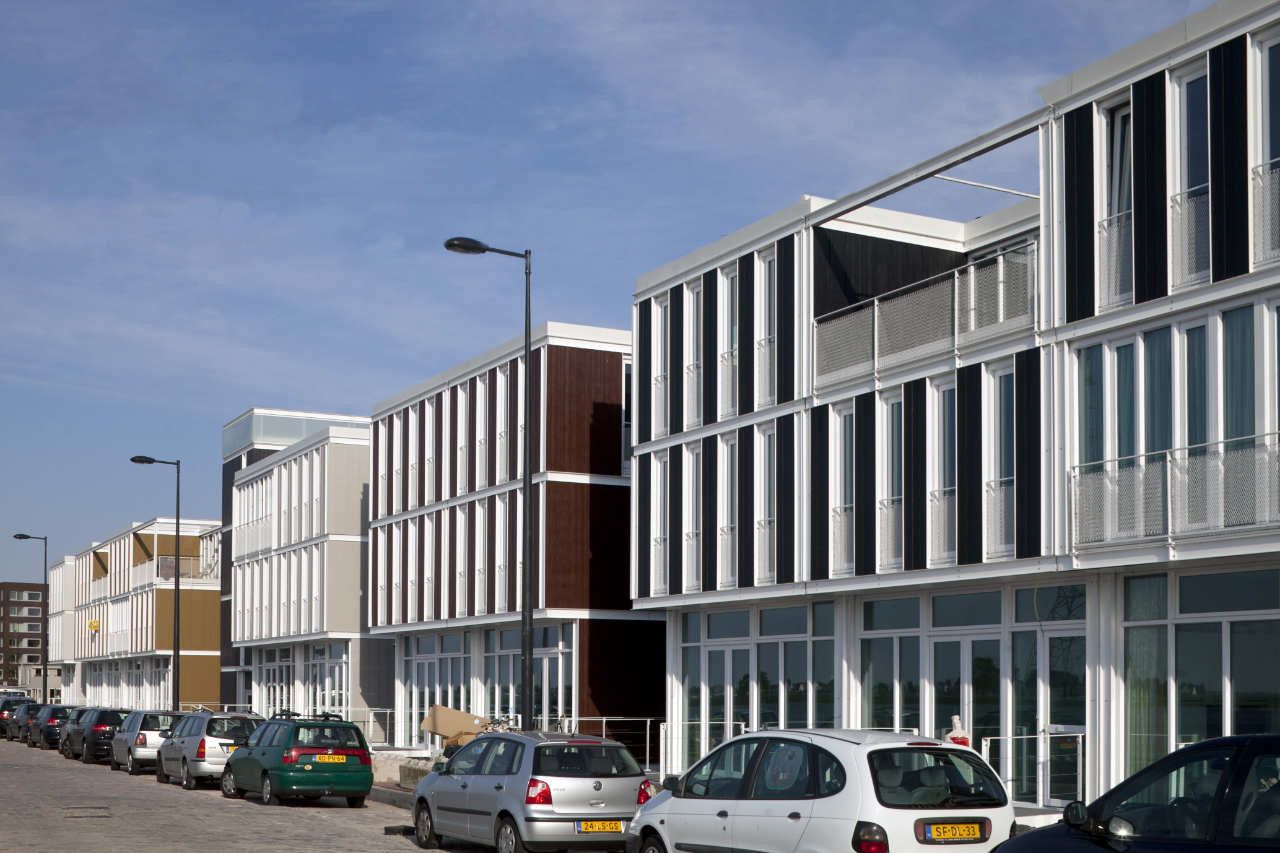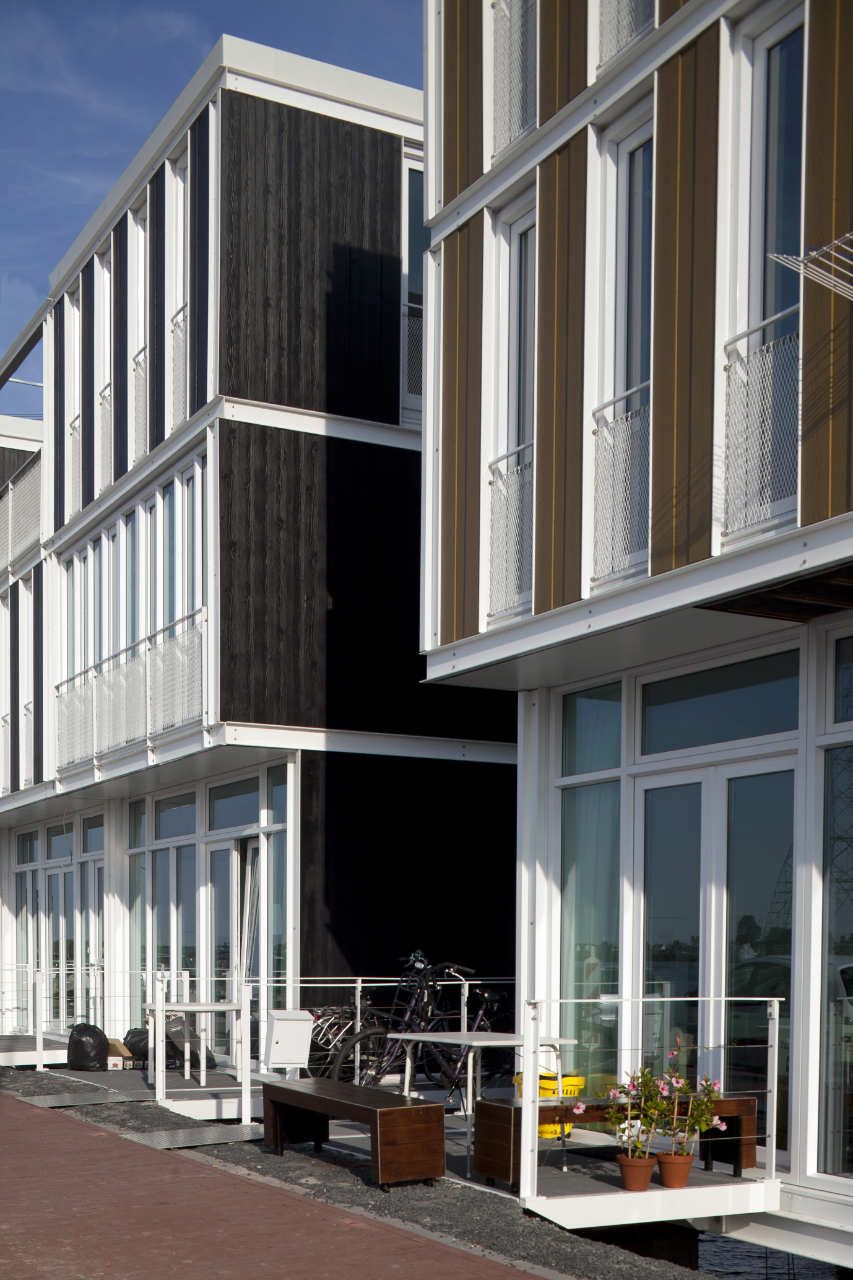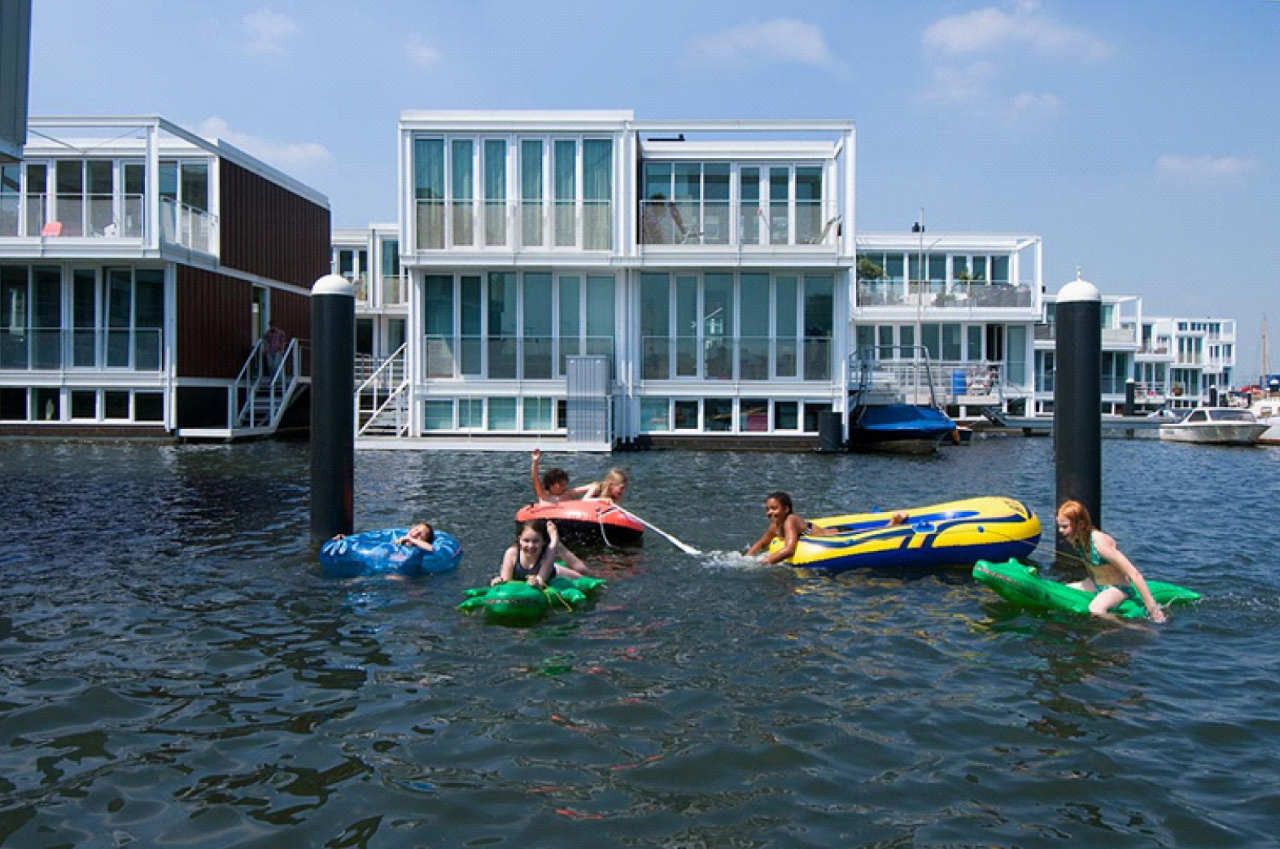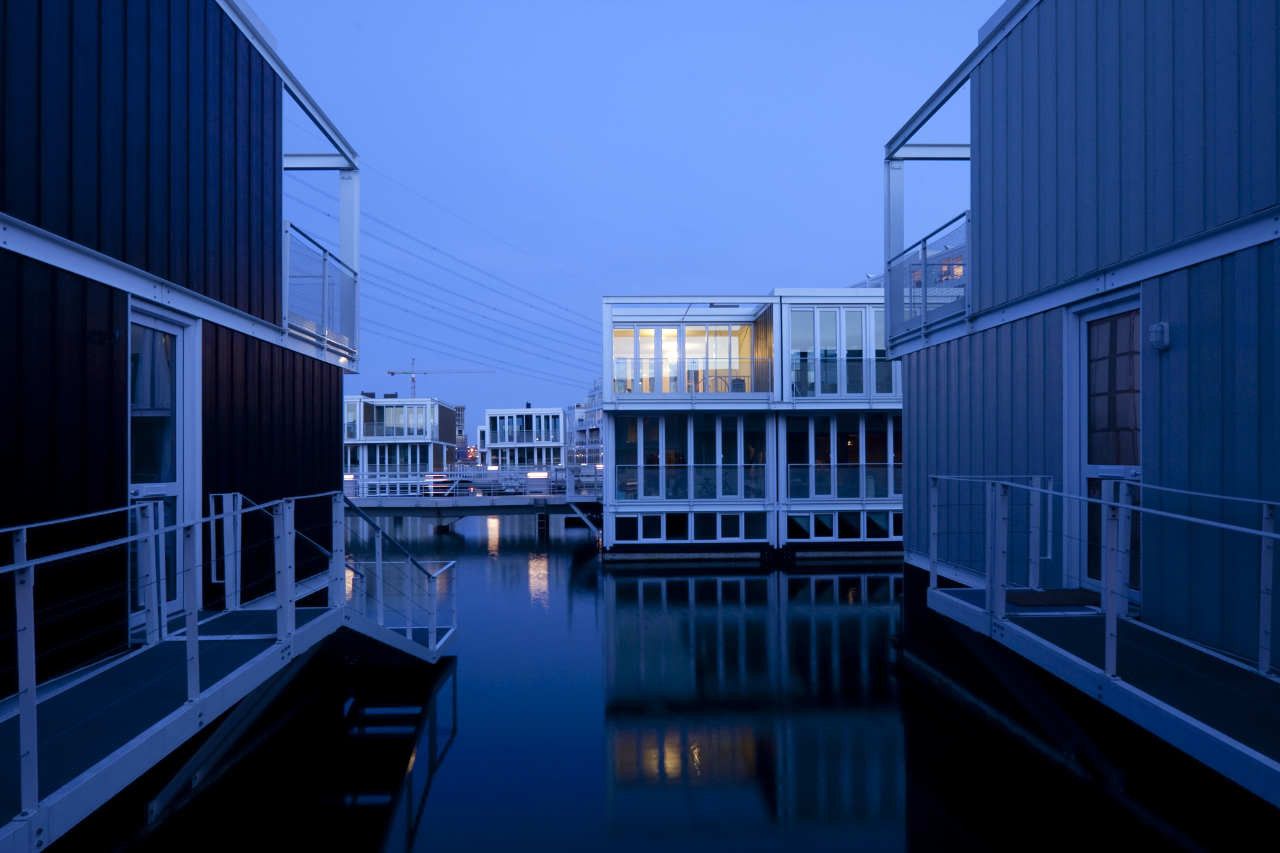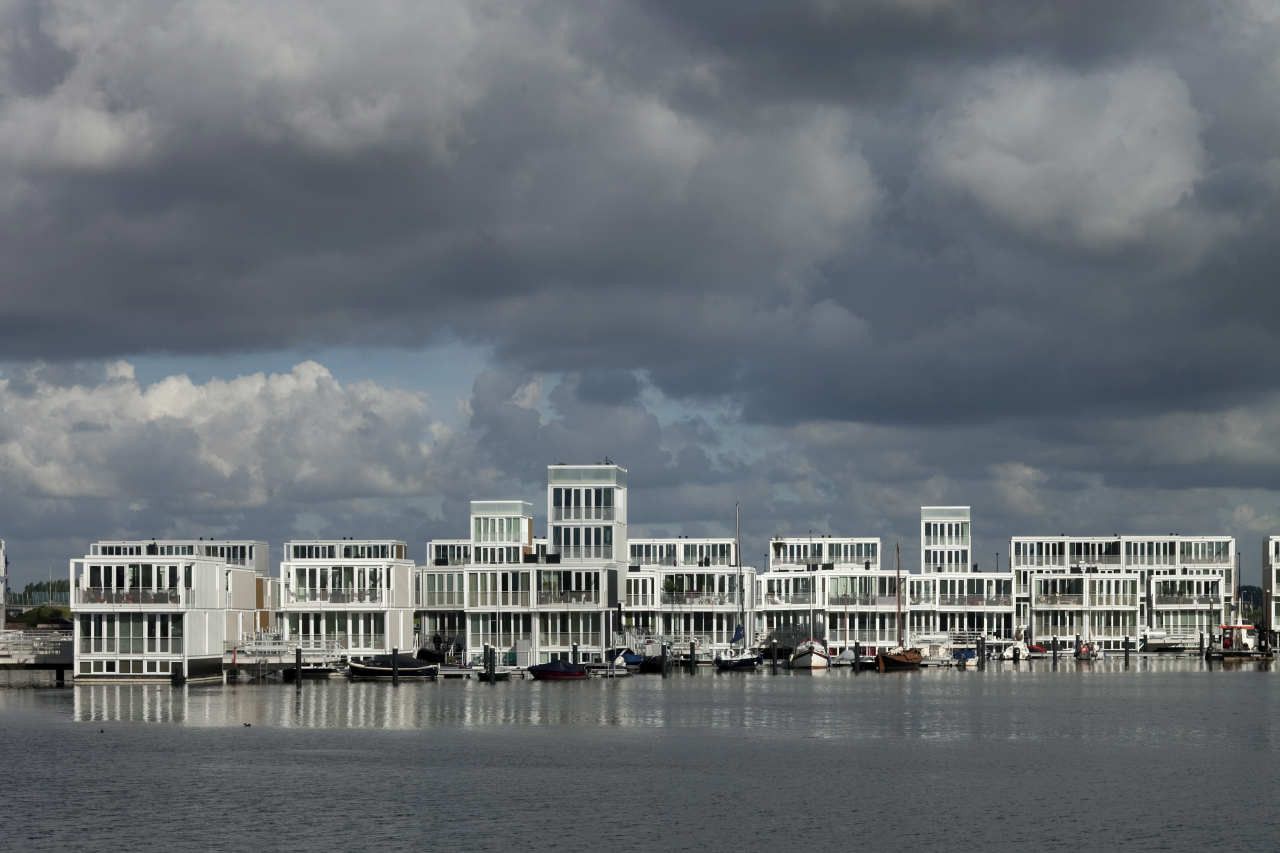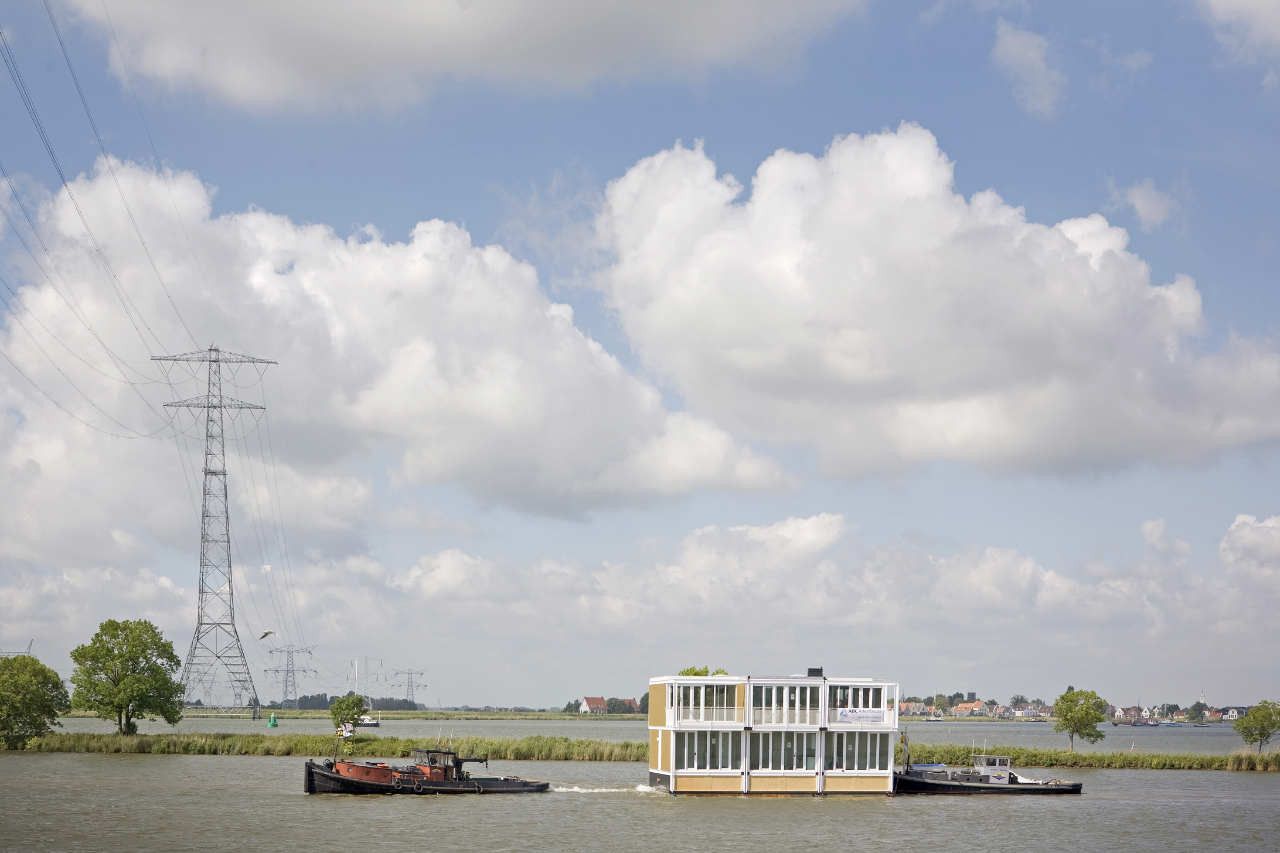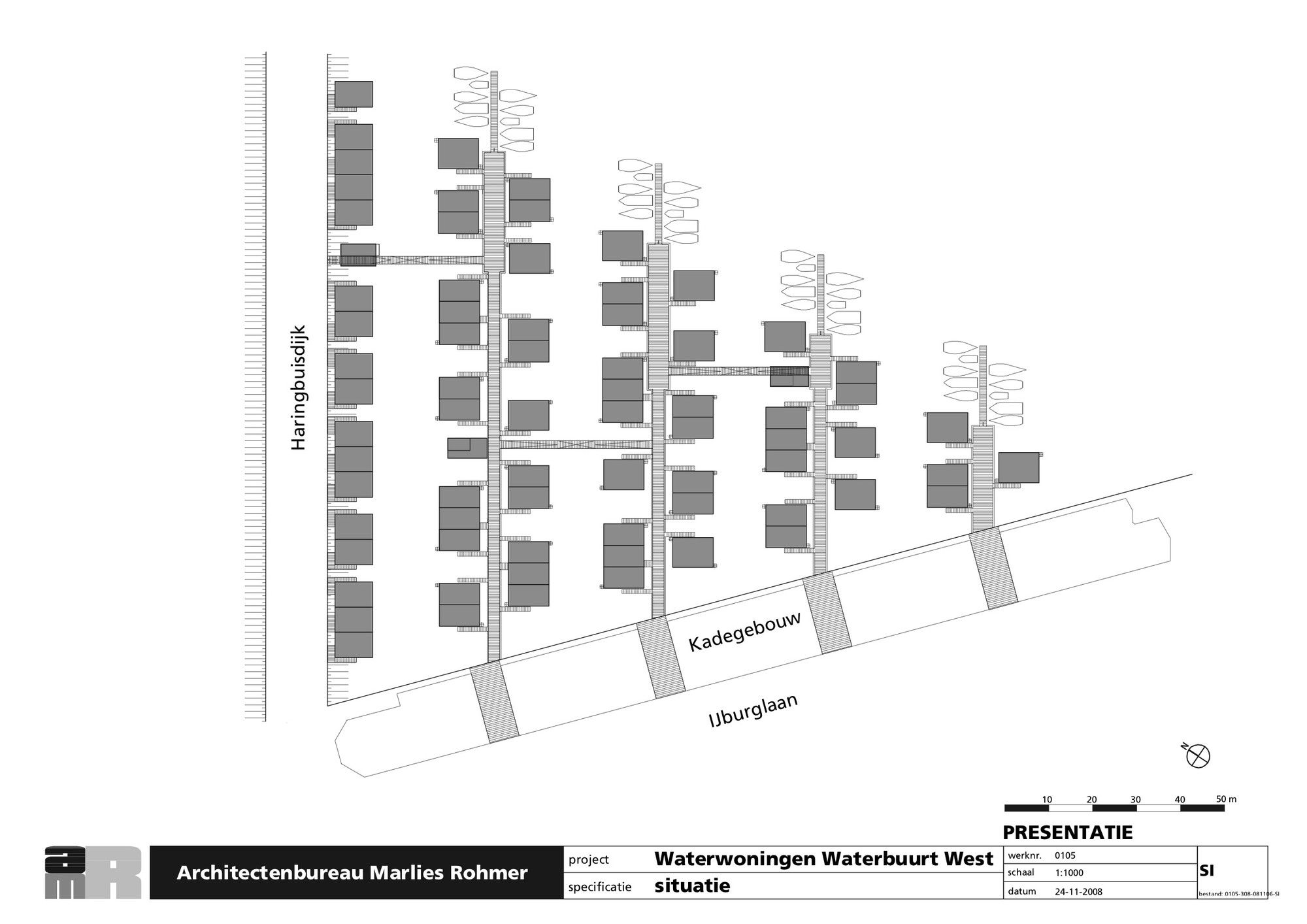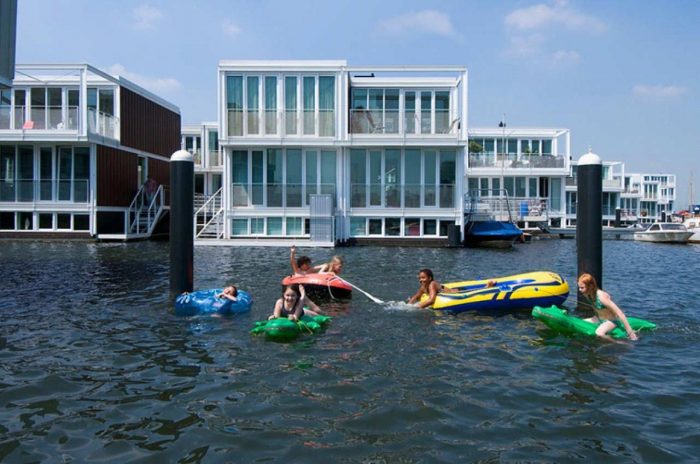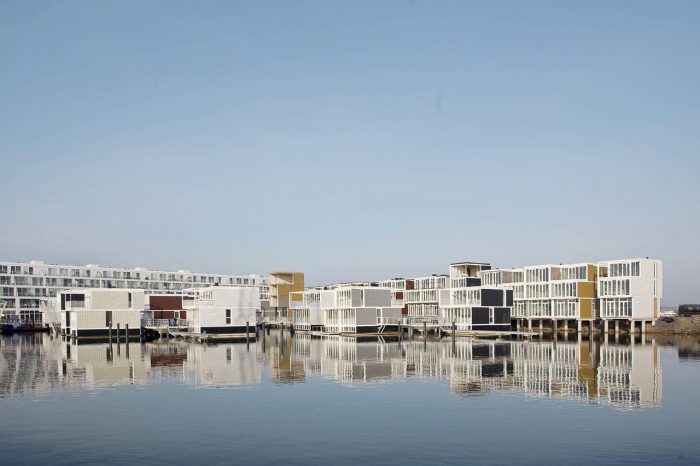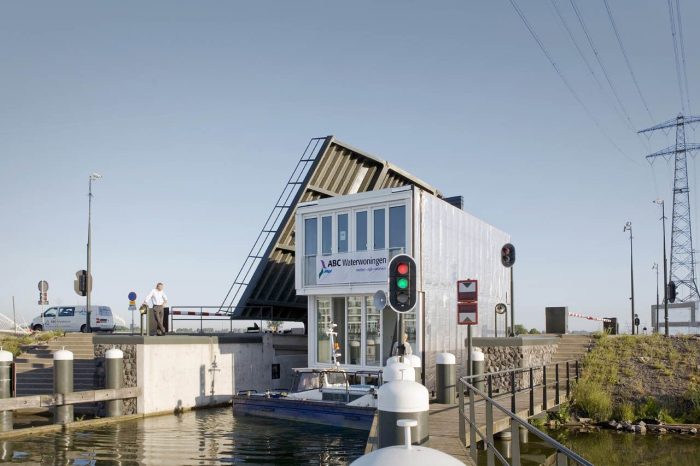Designed by Architectenbureau Marlies Rohmer, Is it a boat? Is it a house? Is it romantic or is it pragmatic? It is a hybrid. It is not what you think it is. Seventy-five floating house and waterside dike houses in the private (rental and owner-occupied) sector. Building on the water is a different story.
Floating House is Holland’s solution for Modern Housing Needs:
The Netherlands has a history of living close to water and of coping with its caprices. That means living on land protected by dikes, on mounds, onshore or floating. Only recently have floating homes been eligible as a significant solution to Holland’s modern housing needs. Canals with houseboats are of course a familiar sight in Dutch cities and one may find the occasional floating hotel or restaurant. But these are always individual units and bear more resemblance to boats than to houses.
In recent years, however, there has been an increase in the number of water-based housing developments that share more characteristics with land-based housing. These floating dwellings form part of an urban design. They are financially classified as immovable properties and compete with land-based accommodation in their interior volume and comfort level. The new water-based developments can incorporate several forms of living with the water. Besides floating homes, they may include amphibious homes and homes that stand free of the water on mounds, dikes or other waterside situations. The IJburg district of Amsterdam is to have complete floating neighborhoods, with jetties instead of paved footpaths and city plazas.
The growing enthusiasm for living beside or on the water in a floating house has two pragmatic motives. Firstly, rising sea levels and increased precipitation will make it necessary to dedicate ever larger areas of land to water storage basins and peak overflow zones. Secondly, some hold that there is already a crucial shortage of new building land. Not everyone shares that view, however: the strategic consolidation of existing towns produces a sharper urban/rural contrast, making many greenfield developments superfluous or even detrimental. Living – and working – on the water is in effect the multiple utilization of space. It is also a way of redeveloping obsolete dockland areas and flooded quarries. Another, more aesthetic, argument in favor of living on the water is that it fosters a feeling of liberty and of closeness to nature.
Project Info:
Architects: Architectenbureau Marlies Rohmer
Location: Amsterdam, The Netherlands
Design Team: Marlies Rohmer and Floris Hund, Michiel van Pelt, Ronald Hageman, Marc de Vries, Charles Hueber, Martin Koster
Client: Ontwikkelingscombinatie Waterbuurt West and Woningstichting Eigen Haard
Area: 10652.0 m2
Project Year: 2011
Photographs: Marcel van der Burg, Roos Aldershoff, Luuk Kramer
Project Name: Floating House in IJburg
